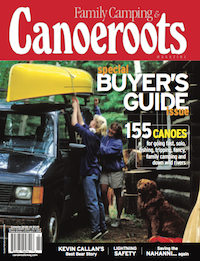- Dew forms when moisture from warm air condenses on a surface that has cooled after the sun has set.
- Dew forms more heavily on vegeta- tion because plants cool quickly due to their large surface area. The same goes for your tent.
- The Grateful Dead’s 17-minute version of “Morning Dew” from May 22, 1977, is generally considered to be their best ever.
- Dew is slower to form on rocks because they retain the sun’s heat longer.
- You could fill a one-litre bottle with the moisture accumulated on 1,450 maple leaves after a heavy night’s dew.
- A dew rag is a coloured bandana that identifies which ‘hood you represent in the city or which camp you attend in Temagami.
- As the saying, “When the dew is on the grass, rain will never come to pass,” suggests, heavy dews are an indication of warm and clear weather.
- Dew doesn’t occur in overcast con- ditions because cloud cover keeps the day’s warmth from escaping into the atmosphere.
- In a good year, Canada exports more than 350 million dew worms to the United States, enough to fill 29 million Styrofoam containers.
- In a bad year, Canoeroots editors find an average of 19 discarded dew worm containers on the shores of eastern Canadian waterways.
- Mountain dew is Tennessee slang for bootlegged whiskey.
- Frost is dew that forms when surface temperatures are below freezing.
- Mountain Dew bottles of the 1960s displayed a gun-toting hillbilly taking aim at a government man.
 This article first appeared in the Spring 2006 issue of Canoeroots Magazine. For more great content, subscribe to Canoeroots’ print and digital editions here.
This article first appeared in the Spring 2006 issue of Canoeroots Magazine. For more great content, subscribe to Canoeroots’ print and digital editions here.



